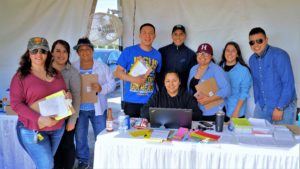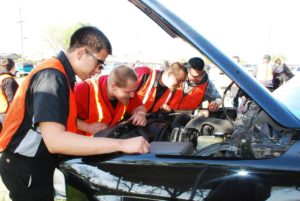Author Shannon Gill
Like many founders, Tom Knox has a knack for spotting problems that need solving. While working in public relations, he learned California’s San Joaquin Valley region has the poorest air quality in the country—and that a significant percentage of air pollution in California is generated by personal vehicles that do not meet emissions standards. Sadly, these cars remain on the road out of necessity; they are older vehicles, operated by low-income families who cannot afford to repair or replace them. They fail emissions tests but have little choice but to drive their cars illegally, risking fines or jail time and filling their communities with smog.
A Shiny Success Story

While politicians focused on lofty, pie-in-the-sky ideas for cleaning the air, Tom saw an opportunity to make a difference on an individual level. He believed the simple act of smog repairs, repeated at a large scale, would result in positive change for the region’s air quality while dismantling a common barrier to low-income families’ upward mobility. And he believed the change could start at the community level. Tom helped to found Valley Clean Air Now (Valley CAN) in 2001 and began building programs to help low-income drivers meet modern California emissions standards.
By 2020, Valley CAN was eliminating 1,300 tons of emissions per year by repairing up to 11,000 cars and replacing another 1,000 cars annually. That’s a lot of data to track!
The Messy Approach to Clean Air
Valley CAN’s data management challenges have evolved over the past 15 years, Tom said.
“When we started working directly with clients in 2005, everything was analog. This was before Wi-Fi, before LTE, before smartphones. We did everything on paper.”
But as demand ramped up, the flow of data grew exponentially. In order to keep up with client needs, Tom knew they had to digitize their operation within the technological limits created by serving a very large and primarily rural region.
“Running an organization like Valley CAN has so many moving parts. And when we added vehicle replacement services in 2014, we realized the old pen and paper process just wasn’t cutting it anymore. We had to digitize if we wanted to stay ahead of the curve and keep helping more people.”
Once Valley CAN integrated Salesforce into their CRM routine, they found themselves making periodic progress before hitting a roadblock that would complicate their efforts. They would fix that issue, only to find themselves stuck again shortly thereafter. Enter the consultants.
Before working with Now IT Matters, Valley CAN worked with several IT consultants who promised to optimize their CRM processes. Tom admitted that disappointing experiences with other consultants made him hesitant to trust anyone outside of his own team.
“These other IT consultants may have had excellent technical skills, but their experience was primarily in for-profit sectors, and they often hurt more than they helped. They didn’t understand—or attempt to understand—the barriers our clients face. It is only very recently that a majority of our clients gained reliable, consistent access to smartphones and the internet. ‘Increase the tech’ isn’t always the answer, yet it was the answer they kept trying to push on us.”
Digging Deep to Tidy Up

By the time Tom reached out to Now IT Matters, the Valley CAN team was disillusioned with IT consultants. But Now IT Matters’s focus on social good organizations reassured them that Valley CAN’s mission would be taken to heart through the entire process. The Assessment stage, Tom explained, was vital to earning his team’s trust.
“Now IT Matters spent time observing us, learning about us and our mission and our processes, rather than busting in and trying to do things their way. That built respect and trust with our team, which made a big difference.”
Another key part of the Assessment process is communication with stakeholders. Clarifying the inner workings of the organization to members of Valley CAN’s executive board, Tom said, put them in a better place to guide Valley CAN’s future. The Assessment process also helped board members understand the value of technology development for Valley CAN’s continued success.
With the Assessment stage completed, Valley CAN decided to continue working with Now IT Matters on Digital Guidance, helping them implement and navigate modified internal practices in relation to the Assessment’s key deliverable, the roadmap. The Digital Guidance stage will last twelve months to ensure practices endure for long-term success and continued growth for the organization–because solving a big problem means solving lots of little problems first.


